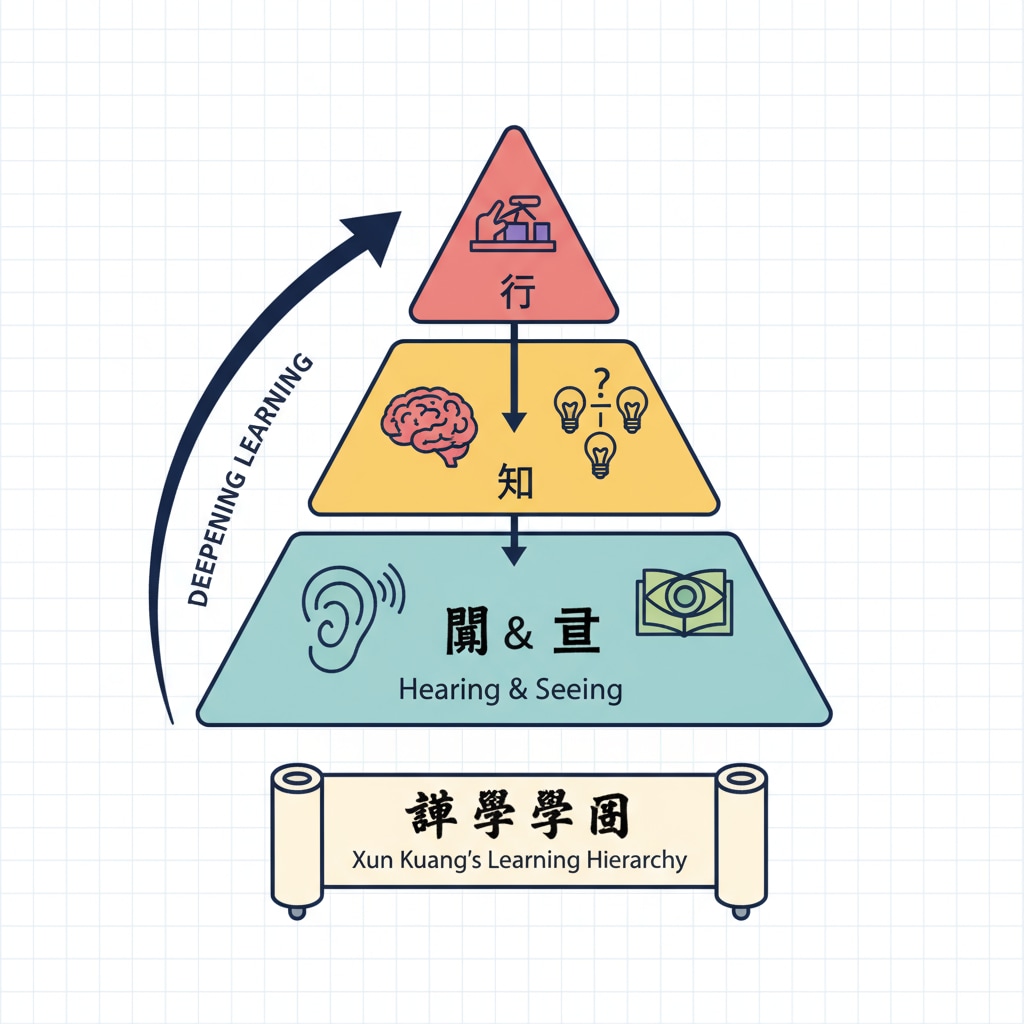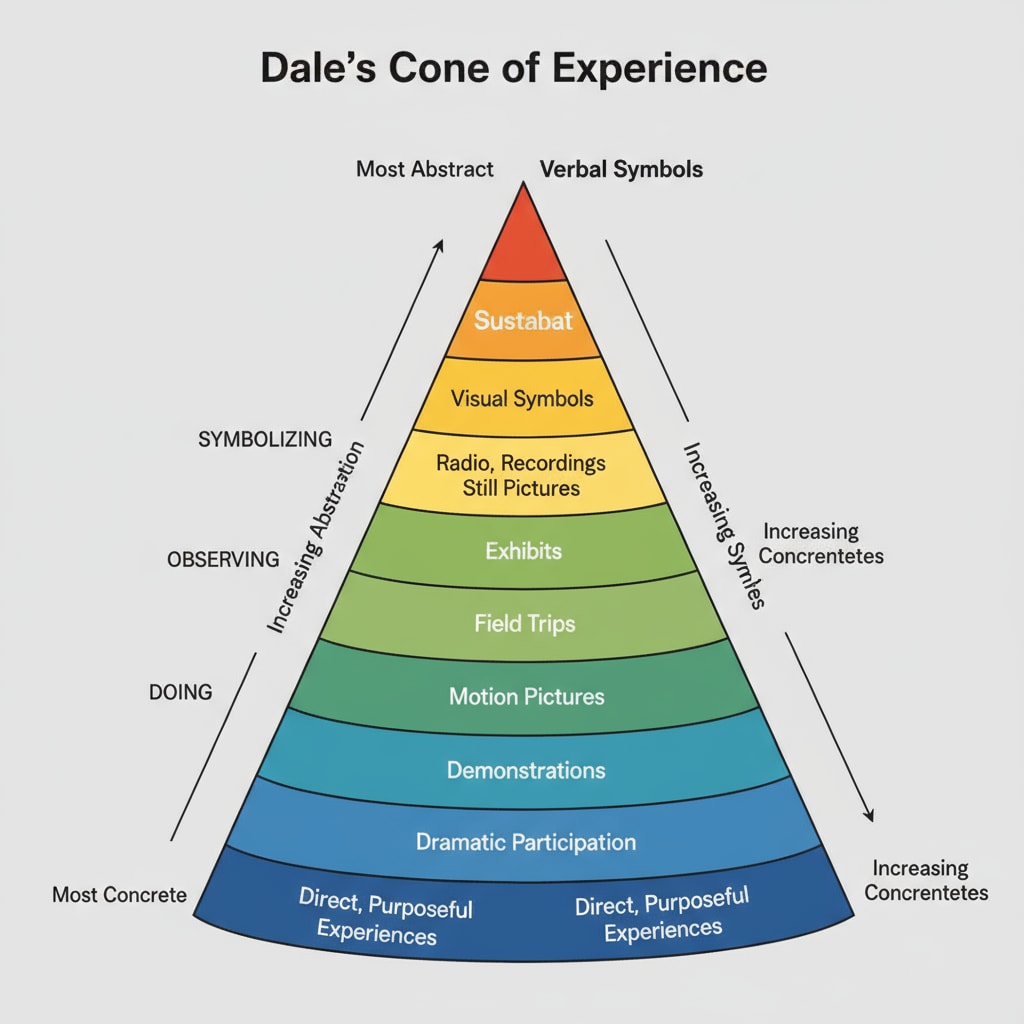Learning theories, Xun Kuang, Dale’s Cone of Experience, and practical learning are integral aspects of educational understanding. Throughout history, scholars have sought to define the most effective ways to learn. In modern education, the exploration of these concepts continues to shape teaching methods and learning outcomes. Let’s delve into how Xun Kuang’s ancient wisdom and Dale’s modern model intersect with practical learning.
Xun Kuang’s Learning Hierarchy
Xun Kuang, an important Confucian philosopher in ancient China, proposed a learning hierarchy. He believed that learning starts from “hearing” and “seeing.” However, true understanding goes beyond mere reception of information. For example, a student may hear a lecture about history but not fully grasp the significance until they engage further. Xun Kuang emphasized that the highest level of learning is “putting into practice” (as cited in Xun Kuang on Wikipedia). When students apply what they’ve learned in real-life situations, they achieve a deeper level of comprehension.

Dale’s Cone of Experience
Dale’s Cone of Experience, developed by Edgar Dale, provides a visual representation of different types of learning experiences. At the base of the cone are the most concrete and direct experiences, such as doing a hands-on experiment. As we move up the cone, the experiences become more abstract, like listening to a lecture. This model suggests that learning is more effective when it involves direct, multi-sensory experiences (as detailed in Dale’s Cone of Experience on Britannica). For instance, a science class where students conduct experiments will likely lead to better understanding than just reading about scientific concepts.

When we compare Xun Kuang’s and Dale’s ideas, we can see similarities. Both emphasize the importance of moving beyond passive learning. In K12 education today, this means that educators should design lessons that incorporate practical activities. For example, in a language class, instead of just memorizing grammar rules, students could engage in role-playing activities to practice speaking. This hands-on approach aligns with the principles of both theories.
VR education is a prime example of how modern technology can facilitate practical and multi-sensory learning. VR allows students to immerse themselves in virtual environments, providing direct experiences. For instance, in a history class, students can use VR to visit ancient historical sites, which is much more engaging than reading a textbook. This application of VR in education showcases the power of combining different learning theories to enhance the learning experience.
Readability guidance: By exploring the ideas of Xun Kuang and Dale, we can see the significance of practical learning. Short paragraphs and lists help summarize key points. Educators should consider these theories when designing lessons to promote deeper understanding among students. Incorporating multi-sensory experiences, as suggested by both theories, can greatly improve the effectiveness of learning in the K12 context.


